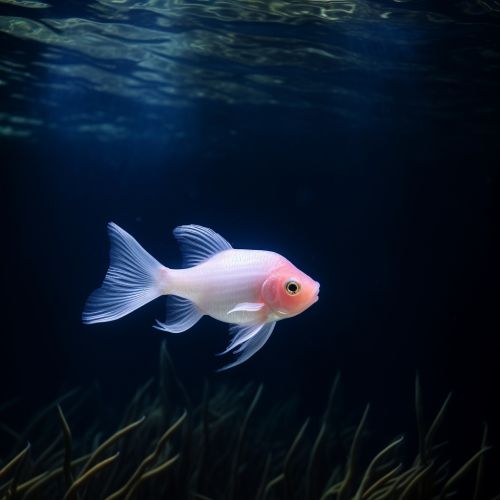Biological Mechanisms of Animal Adaptation to Cave Environments
Introduction
Cave environments, also known as speleological environments, are unique ecosystems characterized by darkness, stable temperatures, high humidity, and limited food resources. These conditions have led to the evolution of a wide range of animal adaptations, which allow species to survive and thrive in these challenging habitats. This article explores the biological mechanisms of animal adaptation to cave environments, focusing on morphological, physiological, and behavioral adaptations.


Morphological Adaptations
Morphological adaptations refer to changes in physical characteristics that enhance an animal's survival in cave environments. These adaptations are often the result of natural selection, where traits that improve survival and reproduction become more common in a population over time.
Reduction or Loss of Vision
One of the most common morphological adaptations in cave-dwelling animals, or troglobites, is the reduction or loss of vision. In the absence of light, eyesight becomes less useful, and energy can be conserved by reducing the development of eyes. This phenomenon, known as eye regression, is observed in many cave-dwelling species, such as the Texas blind salamander and the Mexican tetra fish.


Development of Non-Visual Senses
In response to the loss of vision, other senses often become heightened. This can include an increased sensitivity to changes in water pressure, vibrations, and chemical changes in the environment. For example, the olm, a cave-dwelling amphibian, has developed a highly sensitive lateral line system, allowing it to detect movements and vibrations in the water.
Troglophile and Trogloxene Adaptations
Not all cave-dwelling animals are troglobites. Troglophiles are species that can live in or outside of caves, while trogloxenes are species that use caves but cannot complete their life cycle within them. These species often display a mix of adaptations, such as the gray bat, which has developed excellent echolocation abilities to navigate in the dark, but still retains its vision for foraging outside of caves.


Physiological Adaptations
Physiological adaptations involve changes in an organism's internal functions and are often related to energy conservation, a critical factor in the resource-limited cave environment.
Metabolic Efficiency
Many cave-dwelling animals have evolved to become more metabolically efficient, reducing their energy needs in an environment where food is scarce. For example, the Bulmer's fruit bat has a lower metabolic rate compared to similar species living in more resource-rich environments.
Resistance to Starvation
Resistance to starvation is another common physiological adaptation in cave-dwelling animals. Many species, such as the cave cricket, have developed the ability to store large amounts of fat, allowing them to survive extended periods without food.


Behavioral Adaptations
Behavioral adaptations are changes in an organism's behavior that enhance its survival. In cave environments, these adaptations often involve changes in foraging strategies, reproductive behaviors, and social structures.
Foraging Strategies
In the resource-limited cave environment, efficient foraging strategies are crucial. Many cave-dwelling species have evolved to become opportunistic feeders, consuming a wide variety of food sources. For example, the cave beetle is known to feed on bat guano, dead organisms, and other organic matter.
Reproductive Strategies
Reproductive strategies in cave-dwelling animals often involve producing fewer, but more robust, offspring. This is likely a response to the high mortality rate in cave environments due to limited resources and harsh conditions.
Social Structures
Some cave-dwelling species, such as the Naked mole-rat, have developed complex social structures to enhance survival. These eusocial structures involve a division of labor, where certain individuals are responsible for foraging, while others care for the young or defend the colony.
Conclusion
The unique conditions of cave environments have led to the evolution of a wide range of adaptations in animal species. These adaptations, which involve changes in morphology, physiology, and behavior, demonstrate the remarkable ability of life to adapt to even the most challenging environments. Further study of these adaptations not only enhances our understanding of biological diversity but also provides insights into the processes of evolution and natural selection.
